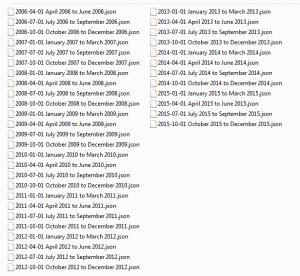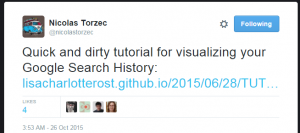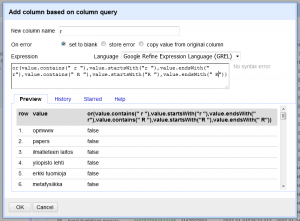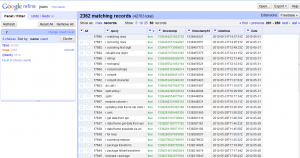Helsingin Sanomat julkaisi viime vuoden lopulla listan (vain tilaajille) 2000-luvun 100 parhaasta suomalaisesta kirjasta. Silmäilin minäkin. Heti alkuun totesin, että olen lukenut niistä vain neljä.
Sitten aloin fundeerata. Listan pohjalta voisi viritellä jotakin pientä projektia. Vaikka pienimuotoista koodailua olenkin harrastanut, en ole koskaan tehnyt mitään, mitä voisi etäisestikään kutsua peliksi. Olisiko tässä ainesta?
Tartuin ensimmäiseen ideantynkään ja ryhdyin keräämään kirjoista niiden alun. Tarkkaan ottaen ensimmäisen virkkeen. Sen, millä tarina käynnistyy. Olipa kerran. Tämä jos mikä on helppo duuni, arvelin, hiukan työläs ja mekaaninen tosin.
Toisin kävi. Miten harva onkaan se teos, jossa nimiösivun jälkeen ei ole mitään etkoa! On alkusanoja, mottoa, aforismia, tarinaa, historiaa… Epigrafien tarkoituksena on selittää niiden esineiden merkitystä, joihin ne on piirretty. Mielenkiintoista, miten runsaasti kirjaesineen merkitystä selitetään. Vai onko tässä kyse samasta funktiosta kuin elokuvan ääniraidalla, joka lisää katselukokemukseen tunnelmaa? Onko alkutekstin tarkoitus viipyillä lukijan mielessä pitkäänkin? Asetetaanko sillä odotusarvo? Niitä lukiessa rapistellaan popcornit esiin?
Ensimmäisyys kirjassa on siis aika lailla suhteellinen käsite. Päätin ottaa sen linjan, että heti kun olen erottavinani kirjailijan oman äänen, se olkoon myös koko kirjan aloitus. Kiitossanat hyppäsin yli.
Ei muotokaan mikään yksiselitteinen asia ole. Virkkeen kuuluisi lopulta törmätä johonkin konkreettiseen kuten piste, mutta tässäkin listassa oli koko joukko kirjoja, joissa näin ei tapahdu. Runous on tietysti selvä tapaus, mutta runouden ja proosan välissä on paljon tilaa. Muutamassa teoksessa ensimmäinen piste häämötti vasta useamman pilkun tuolla puolen. Aina kun en tiennyt mitä tehdä, pätkäisin vaan ronskisti mukaan edes jonkin verran. Pahoittelut tästä.
Helsingin yliopiston Kaisa-talon kirjastossa suomenkielinen kaunokirjallisuus on kerroksessa K3. Reilussa tunnissa olin käynyt läpi hyllyistä löytyneet listan teokset. Noin kolmasosa. Sen jälkeen istuin Kansalliskirjaston vapaakappaletyöasemalla suunnilleen yhtä pitkän rupeaman; uudemmista teoksista on varsin usein myös elektroninen vapaakappale. Bonuksena äkkäsin yhden, joka ei ollut Varia-kokoelmassa, toisin kuin Finna-hakupalvelu kertoi. Muutamassa tunnissa Vapaakappalepalvelut korjasi senkin poikkeaman.
Jäljelle jäi noin tusina nimekettä, joista valtaosa oli paikalla Suomalaisen Kirjallisuuden Seuran kirjastossa Hallituskadulla. Hotakaisen Juoksuhaudantie on omassa kirjahyllyssä kotona, loput laitoin varaukseen kirjastoista. Yli-Juonikkaan Neuromaanin jouduin tosin tilaamaan Kansalliskirjaston erikoislukusaliin, koska varausjonot olivat kaikkialla pääkaupunkiseudulla niin pitkät.
Eipä aikaakaan, niin materiaali oli kasassa.
Päätin tehdä pelin, jossa arvuutellaan, mikä lause kuuluu mihinkin kirjaan. Ei ollenkaan ainutlaatuinen idea (ks. vaikka tämä), mutta halusin oppia jotakin interaktiivisuuden toteuttamisesta verkossa. Lyhyesti: miten raahata palikoita paikasta toiseen. Kaikki tähänastinen vuorovaikutteisuus, jonka olen päästänyt käsistäni, on nojannut Shiny-tekniikkaan. Shiny on integroitu ohjelmoinnin tukiympäristö, framework. Se on palvellut hyvin, koska en ole kiinnostunut verkkosivujen tyylitietojen virittelystä (enkä sitä paitsi osaisikaan) ja JavaScript-tietämys on taaperotasoa. Siinä missä toiset oppivat kävelemään ja porttaamaan JavaScriptillä Doom-pelin PDF:lle, minä saatan kehittyä konttaamisessa, en juuri enempää.
Otin opettajaksi ja työkaveriksi ChatGPT 4o minin, joka palvelee ilman tilausta ja kirjautumista. Koodin lähtökohta oli ns. natiivi JavaScript, jos vain mahdollista. Erinäisten iterointien ja yritys-erehdys-vaiheiden jälkeen tuloksena on kohtuullisesti toimiva prototyyppi. Raahaus onnistuu muilla kotoa löytyvillä välineillä ja selaimilla paitsi Androidin Firefoxilla. Oikeat ja väärät vastaukset erottuvat kuten oli tarkoitus, ja saman istunnon peräkkäisten pelikertojen pohjalta lasketaan kokonaispistemäärä. Virhetilanteiden ennakointia en viitsinyt vielä pidemmälle, joten pientä epäloogisuutta löytyy.
Pelin ulkonäkö on karu ja siksi varmaan jääkin. Raahaaminen olisi kyllä mukavampaa, jos lauseet olisivat samalla tasolla nimien kanssa, ei niiden alla, koska nyt saattaa joutua vierittämään. Laatikoiden tiivistyskään ei olisi pahitteeksi.
Kertaalleen erehdyin pyytämään CSS-vinkkejä ulkoasun kohentamiseksi, jolloin ChatGPT:lla lähti heti lapasesta. Palasin takaisin. Yritin myös löytää tapaa korvata systeemitason varoitusikkuna, joka pongahtaa tylyn näköisenä esiin kun pyytää tuloksen. Siltäkin sivupolulta pakitin, koska modal-ikkunointi on outoa ja vierasta, enkä tajunnut mitä ChatGPT:n koodi sillä oikein teki. Oli mitä oli, ei ainakaan toiminut.
Aloitetaan vaikka tästä.



